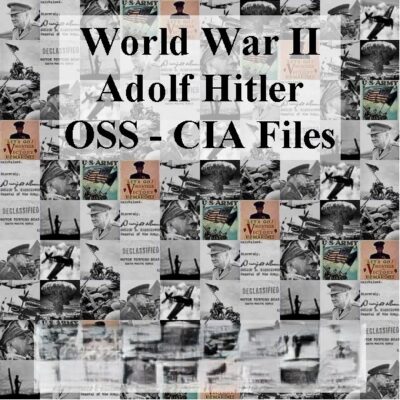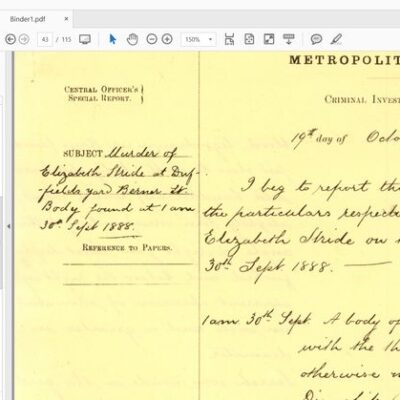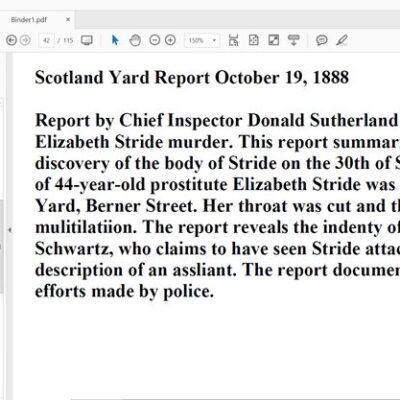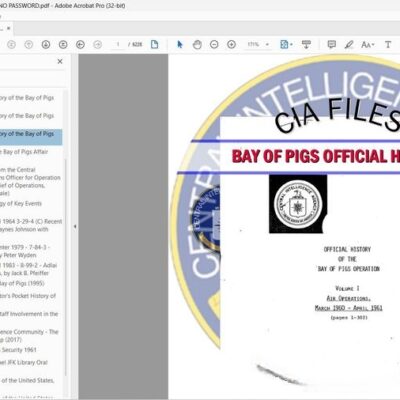
Description
Albert Anastasia: A Mob Life Timeline and Key Figures
Timeline of Main Events:
- February 26, 1902: Umberto Anastasio (later known as Albert Anastasia) is born in Tropea, Calabria, Italy.
- Around 1917: Anastasia illegally enters the United States by jumping ship.
- 1920: While working as a longshoreman in New York, Anastasia kills Joe Torino. He is convicted and sentenced to death.
- Circa 1921-1922: Anastasia spends approximately 18 months in the death house at Sing Sing prison. His conviction for the Torino murder is overturned, and he is granted a new trial. Key witnesses against him subsequently disappear or change their testimony.
- 1920s-1930s: Anastasia allegedly controls racket businesses and strong-arm activities on the New York City waterfront and becomes a strike-buster. He rises to a position of power in the International Longshoremen’s Association.
- 1928-1931 (Castellammarese War): Conflicts escalate between mob leaders.
- April 15, 1931: On Lucky Luciano’s orders, Albert Anastasia, Meyer Lansky, and Bugsy Siegel murder Giuseppe “Joe the Boss” Masseria at a Coney Island restaurant, effectively ending one faction of the Castellammarese War.
- September 1931: Salvatore Maranzano is murdered by men disguised as Treasury agents, further consolidating Luciano’s power.
- Early 1930s: Following the Castellammarese War, Lucky Luciano co-founds the National Crime Syndicate (the “Commission”) and “Murder, Inc.” Anastasia becomes a leading figure in the Brooklyn-based Murder, Inc., which acts as the enforcement arm of the Syndicate.
- Circa 1940: Abe Reles, a key hitman for Murder, Inc., is arrested.
- 1940-1941: To avoid the electric chair, Abe Reles begins cooperating with authorities, providing information that leads to the conviction of several Murder Inc. members, including Louis “Lepke” Buchalter.
- 1941: Albert Anastasia allegedly puts out a $100,000 contract on Abe Reles.
- November 12, 1941: While under police protection at the Half Moon Hotel in Coney Island, Abe Reles dies mysteriously after falling from a window.
- 1943: Albert Anastasia becomes a naturalized U.S. citizen while serving in the United States Army in Pennsylvania during World War II.
- World War II Era: After Lucky Luciano’s imprisonment, Anastasia allegedly orchestrates the destruction of the SS Normandie in New York Harbor and leverages his influence on the waterfront to secure favorable treatment and eventual parole for Luciano after the war, based on the premise that Luciano could ensure order on the waterfront and assist with the anticipated invasion of Italy.
- Post-World War II: Luciano is deported to Italy after the war.
- 1951: Vincent Mangano, boss of the Mangano crime family, goes missing. His brother Phil Mangano is murdered. Albert Anastasia claims control of the family (later known as the Gambino family), with Frank Costello’s support at a Commission meeting.
- 1952: Arnold Schuster, a Brooklyn clothes store salesman, identifies and helps apprehend fugitive bank robber Willie Sutton. Schuster is later murdered, believed to be on Anastasia’s orders. This murder increases opposition to Anastasia within the mob.
- 1953: Albert Anastasia faces a deportation hearing due to his criminal activities.
- Mid-1950s: Anastasia faces income tax evasion prosecution. His first trial ends in a hung jury.
- 1955: Leading up to his second tax evasion trial, Anastasia’s associate Vincent Macri is murdered, and Macri’s brother disappears. A key witness, Charles Ferri, and his wife also disappear.
- May 23, 1955: Anastasia pleads guilty to tax evasion.
- June 3, 1955: Anastasia is sentenced to one year in federal prison and a $20,000 fine.
- September 19, 1955: A higher court overturns the federal government’s successful petition to revoke Anastasia’s citizenship for deportation.
- October 25, 1957: Albert Anastasia is murdered by masked gunmen while sitting in a barber’s chair at the Hotel Park Sheraton in New York City. Carlo Gambino succeeds him as the boss of the Gambino family.
- 1959: As part of a conspiracy involving Luciano, Costello, Lansky, and Gambino, Vito Genovese is convicted on narcotics charges and sentenced to 15 years in prison.
- 1969: Vito Genovese dies in federal prison.
Cast of Characters:
- Albert Anastasia (Umberto Anastasio): A powerful and ruthless Italian-American mobster. He was a hitman, a co-founder of Murder, Inc., and later the boss of the Gambino crime family. Known as “Mad Hatter” and “Lord High Executioner.” He illegally immigrated to the US around 1917 and became a naturalized citizen in 1943.
- Abe Reles (“Kid Twist”): A notorious hitman for Murder, Inc. Arrested in the 1940s, he cooperated with authorities to avoid the electric chair, providing crucial testimony against other mobsters. He died mysteriously while under police protection in 1941, believed to be as a result of an Anastasia-ordered hit.
- Louis “Lepke” Buchalter: A labor racketeer and leading figure in Murder, Inc. His conviction was secured due to the testimony of Abe Reles, and he was eventually executed.
- Lucky Luciano: A major figure in the American Mafia, considered the father of modern organized crime. He orchestrated the murders of Masseria and Maranzano, co-founded the National Crime Syndicate, and played a key role in shaping the structure of the Mafia. He was imprisoned on pandering charges but later deported.
- Giuseppe “Joe the Boss” Masseria: An old-school Mafia boss whose assassination in 1931 was a pivotal event in the Castellammarese War, paving the way for Luciano’s rise.
- Salvatore Maranzano: Another powerful, old-school Mafia boss who was murdered in 1931, shortly after Masseria, marking the end of the Castellammarese War.
- Meyer Lansky: A brilliant Jewish mob accountant and strategist who was closely allied with Luciano. He was involved in the plot to kill Masseria and played a significant role in the development of organized crime. He initially supported Anastasia but later switched his allegiance to Genovese’s rivals.
- Bugsy Siegel: A flamboyant and violent mobster associated with Luciano and Lansky. He participated in the murder of Joe Masseria and later became a key figure in the development of Las Vegas.
- Anthony “Tough Tony” Anastasio: Albert Anastasia’s brother, also involved in waterfront rackets. He is believed to have carried out the destruction of the SS Normandie on Albert’s orders.
- Vincent Mangano: The boss of the Mangano crime family (later the Gambino family) before Anastasia. He had a long-running feud with Anastasia and disappeared in 1951.
- Phil Mangano: Vincent Mangano’s brother, who was murdered in 1951 around the time of Vincent’s disappearance.
- Frank Costello: A powerful and influential mob boss known for his political connections and more subtle approach to crime. He initially supported Anastasia’s takeover of the Mangano family but later conspired against Vito Genovese.
- Arnold Schuster: An innocent Brooklyn clothes store salesman who identified Willie Sutton and was subsequently murdered, believed to be on Anastasia’s orders. His death caused public outrage and increased scrutiny on Anastasia.
- Willie Sutton: A notorious bank robber who was apprehended after being recognized by Arnold Schuster.
- Carlo Gambino: Anastasia’s underboss who eventually conspired with Vito Genovese against Anastasia. He became the boss of the Gambino family after Anastasia’s murder.
- Vito Genovese: A powerful and ambitious mob boss who sought to take control of the Luciano-Costello organization. He plotted against Anastasia and eventually became a rival to Gambino. He was later imprisoned on narcotics charges as a result of a conspiracy involving Luciano, Costello, Lansky, and Gambino.
- Joe Torino: A longshoreman murdered by Albert Anastasia in 1920, leading to Anastasia’s initial conviction and death sentence (later overturned).
- Vincent Macri: An associate of Albert Anastasia who was found murdered before Anastasia’s second tax evasion trial in 1955.
- Charles Ferri: A key witness in Anastasia’s tax evasion case who disappeared with his wife shortly before the trial.
Albert Anastasia – Murder Inc. FBI & NYPD Files
842 pages of documents on Gambino Family boss Albert Anastasia.
Anastasia was a hitman, crime boss and one of the founders of the modern American Mafia, and a co-founder of the Murder, Inc and later boss of the Gambino Crime Family.
The files in this collection contain a text transcript of all recognizable text embedded into the graphic image of each page of each document, creating a searchable finding aid. Text searches can be done across all files.
Documents include:
FBI Files
594 pages of FBI files on Albert Anastasia. Files date from 1952 to 1974. They include background information on Albert Anastasia. Information about witness intimidation. Rundowns of a long history of criminal activity. His criminal arrest rap sheet. Information about the murdering of witnesses. Details about tax evasion investigations. Information about the government’s attempts to have Albert Anastasia’s citizenship revoked. Some of the files were not declassified until November 2021.
New York Police Department Files
9 pages of NYPD files including NYPD bulletin on the death of Anastasia, synopsis of his autopsy, eyewitness account of his murder from the manicurist in the barber shop he was killed in, memo on Frank Costello refusal to talk to NYPD detectives, summary of witnesses and suspects.
Abe Reles FBI Files
In addition to the material above, the disc contains 197 pages of FBI files concerning hitman Abe Reles, also known as “Kid Twist.” Files date from 1940 to 1970 and contain approximately 55 pages of discernable memos. Contains information on the FURDRESS investigation into racketeering in the New York garment industry, the Bureau’s recommendation that Reles receive immunity in exchange for testimony, contains information on the number of cases he could be called on to give testimony.
Reles cooperated with the legal authorities to receive immunity instead of the electric chair which ended Murder Inc. The information lead to the conviction of several Murder Incorporated hitmen, including Louis “Lepke” Buchalter, who died in Sing Sing’s electric chair. It is believed that Anastasia put out a $100,000 contract on Reles. On November 12, 1941, while in the protection of six police officers, Reles mysteriously fell to his death from a window of the Half Moon Hotel in Coney Island.
Newspapers
28 Full sheet newspaper pages dating from 1940 to 1952 covering major events in the life of Albert Anastasia,
United States of America v. Umberto Anastasio, Also Known as Albert Anastasia, Appellant, 226 F.2d 912 (3d Cir. 1955)
Text of decision in Anastasia deportation case. On May 23, 1955, Anastasia pleaded guilty to tax evasion for underreporting his income during the late 1940s. On June 3, 1955, Anastasia was sentenced to one year in federal prison and a $20,000 fine. After his conviction, the federal government successfully petitioned to revoke Anastasia’s citizenship so he could be deported. However, on September 19, 1955, a higher court overturned this ruling.
About Albert Anastasia
Umberto Anastasio was born on February 26, 1902, in Tropea, Calabria, Italy. He later changed his name to Albert Anastasia. He was often referred to as “Mad Hatter” and “Lord High Executioner.” Around the age of 15, Anastasia jumped ship and illegally entered the United States. Anastasia became a naturalized citizen in 1943 while serving in the United States Army. He was stationed in Pennsylvania during the war. Some believe this was the result of a bribe.
In 1920, Albert Anastasia was working as a longshoreman in New York. He got into an argument over ship assignments with a fellow longshoreman named Joe Torino. Anastasia stabbed and strangled Torino to death. Anastasia was convicted and sentenced to death. After spending 18 months in the death house at Sing Sing prison, his conviction was overturned, and he was going to receive a new trial. The four most important witnesses against him for his re-trial all ended up missing. Other witness changed their testimony. Albert Anastasia allegedly controlled racket businesses and ran strong arm activities on the New York City waterfront and was a strike buster. He rose to a position of power in the International Longshoremen’s Association, the longshoremen’s union.
In 1928, conflicts between mob leaders led to the Castellammarese War. In 1930, Lucky Luciano went to Anastasia with a plan that would put Luciano on top of the east coast crime world. Luciano would kill mob bosses Giuseppe “Joe the Boss” Masseria and Salvatore Maranzano. On April 15, 1931, Luciano invited Masseria to a sit-down at Nuova Villa Tammaro, a Coney Island restaurant. After Luciano excused himself to the bathroom. Albert Anastasia, Meyer Lansky, and Bugsy Siegel entered the restaurant and killed Masseria. A few months later, men disguised as Treasury Department agents entered Salvatore Maranzano’s office, disarmed his bodyguards and killed Maranzano.
At the end of the Castellammarese War, a more peaceful existence between the crime bosses was sought. Luciano co-founded a crime cooperative that became known as the National Crime Syndicate, or the “Commission,” made up of major crime bosses from across the country and the Five Families of New York. The Syndicate divided and regulated the illicit markets. Each gang in the syndicate had its own franchise, such as gambling, drugs, or prostitution. One section of the Syndicate enforced the Syndicate’s business and performed murders for hire and was known as “Murder, Inc.” For decades the FBI denied the existence of such an organization as the “Syndicate.” Anastasia was a leading figure in the Brooklyn, New York based “Murder, Incorporated”. Luciano gave this authority to Anastasia as a reward for his assistance during the Castellammarese War. Murder, Incorporated also featured the talents of labor racketeer Louis “Lepke” Buchalter. Murder, Incorporated operated out of a candy store called Midnight Rose’s, in the Brownsville section of Brooklyn. At the time, Anastasia carried a business card saying he was a “sales representative” for the Convertible Mattress Corporation in Brooklyn. Crime researchers believe Murder Inc. was responsible for between 400 and 800 murders.
Murder Inc. dissolved in the 1940’s, after hitman Abe Reles was arrested. Reles cooperated with the legal authorities to receive immunity instead of the electric chair. The information he gave facilitated the conviction of several Murder Incorporated’s hitmen, including Louis “Lepke” Buchalter, who died in Sing Sing’s electric chair. It is believed that Anastasia put out a $100,000 contract on Reles. On November 12, 1941, while in the protection of six police officers, Reles mysteriously fell to his death from a window of the Half Moon Hotel in Coney Island.
After Luciano went to prison on a pandering conviction, it is believed that Anastasia carried out a plan to get him released from prison, seeking to win him a pardon for assistance in the war effort. Anastasia sought to create havoc on the New York waterfront to disrupt the U.S. Navy’s activities. While the French luxury liner SS Normanide was in port in New York Harbor, being converted into a troop carrier, it burned and capsized. Speculation was that German saboteurs were responsible for the sinking. It is believed that it was Anastasia, who ordered his brother, Anthony “Tough Tony” Anastasio to see that the ship was destroyed. Anastasia convinced the Navy that Luciano could see that things would be in order on the Waterfront. Anastasia lobbied that Luciano’s contacts in Sicily could help with advance work for an anticipated U.S. invasion of Italy. A deal was worked-out that in exchange for his cooperation, Luciano would receive favored treatment while in prison and would receive parole after the war. After the war, Luciano was deported to Italy.
Vincent Mangano, the boss of the Mangano crime family, later known as the Gambino family, had a long running feud with Anastasia. In 1951, after Vincent Mangano went missing, and his brother Phil Mangano was murdered, Anastasia claimed control of the Mangano Family. At a meeting of the “Commission,” Frank Costello backed Anastasia’s claim that Mangano was out to kill him, and that Anastasia was acting in self-defense. The Commission bosses accepted Anastasia’s claim to the role of boss.
Albert Anastasia detractors were concerned about whether he was killing too many people. In 1952, a 24-year-old Brooklyn clothes store salesman, Arnold Schuster, saw fugitive bank robber Willie Sutton on a subway car. He contacted the police and Sutton was apprehended. Schuster was interviewed on TV. After seeing this, Anastasia is believed to have ordered Schuster’s death. One month later Schuster was found shot to death. Over the next ten years the crime was one of the most investigated murders in the history of the New York Police Department. However, the case was never solved. The murder of an outsider on non-mob business increased opposition to Anastasia from mob leaders such as Vito Genovese. Genovese sought to move support away from Anastasia. Genovese would eventually successfully move Anastasia’s underboss, Carlo Gambino, to his side.
Albert Anastasia faced a deportation hearing in 1953 due to his criminal activity. In the mid 1950’s Anastasia was facing an income tax evasion prosecution. The first trial ended in a hung jury. There was to be a second trial in 1955. Anastasia associate, Vincent Macri, was found shot to death, his body in the trunk of a car in the Bronx. A few days later, Macri’s brother went missing and was never again seen. The key witness in the case was a Fort Lee, New Jersey, plumber named Charles Ferri. A month before the trail, Ferri and his wife went missing, leaving behind a blood splattered retirement house in Miami, Florida. At trial, Anastasia took a plea bargain and was sentenced to one year in prison.
Meyer Lansky supported Anastasia because he did not want to see Genovese gain more power. When Anastasia put heat on Lansky for a larger contribution from Lansky’s gambling operations, Lansky gave his support to Genovese. On October 25, 1957, Albert Anastasia was killed by masked gunmen while sitting in a barber’s chair at the Hotel Park Sheraton located at 7th Avenue and 55th Street in New York City. It is ironic that 35 years earlier he escaped the electric chair, and his life would end when he was fatally wounded in a barber’s chair. The murder of Albert Anastasia was the inspiration for the scene in the 1972 Francis Ford Coppola movie “The Godfather,” adapted from the Mario Puzzio novel, where Moe Green, a Las Vegas casino proprietor, is gunned down on a massage table by two masked hit men.
Luciano and Costello learned of Genovese’s desire to also have them rubbed out from Gambino. Meyer Lansky, Lucky Luciano, Frank Costello and Carlo Gambino conspired to set-up Vito Genovese with a narcotics conviction. In 1959 Vito Genovese was convicted and sentenced to 15 years. Genovese died of a heart attack in a federal prison in 1969.





Related products
-


Adolf Hitler: OSS – CIA Files
$19.50 Add to Cart -


Jack the Ripper – Whitechapel Murders: London Police, Scotland Yard, and FBI Case Files
$19.50 Add to Cart -

Joseph Valachi FBI Files – Congressional Hearings & Other Historical Material
$19.50 Add to Cart -

Bay of Pigs CIA Official History of the Bay of Pigs Operation
$19.50 Add to Cart